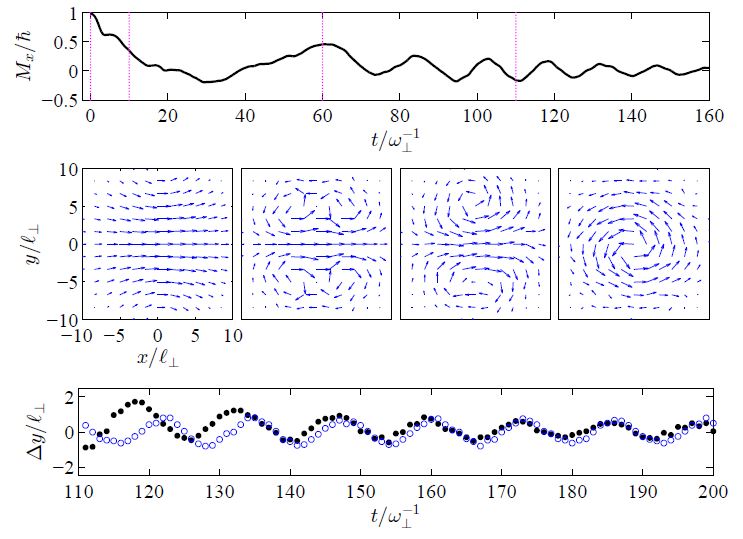
News
 Bethe-Ansatz专家管习文来我组作系列报告[2017-11-10]
Bethe-Ansatz专家管习文来我组作系列报告[2017-11-10] Topological Phase Transition and Charge Pumping in a One-Dimensional Periodically Driven Optical Lattice[2017-07-30]
Topological Phase Transition and Charge Pumping in a One-Dimensional Periodically Driven Optical Lattice[2017-07-30] 山西大学2017研究生毕业典礼[2017-06-25]
山西大学2017研究生毕业典礼[2017-06-25] CAT小组刘彦霞同学通过博士学位论文答辩[2017-06-03]
CAT小组刘彦霞同学通过博士学位论文答辩[2017-06-03] 王利CSC公派访学结束回所工作[2017-05-22]
王利CSC公派访学结束回所工作[2017-05-22] 尹相国回到冷原子理论研究组工作[2017-04-13]
尹相国回到冷原子理论研究组工作[2017-04-13] Spectroscopy and spin dynamics for strongly interacting few spinor bosons in one-dimensional traps[2017-04-06]
Spectroscopy and spin dynamics for strongly interacting few spinor bosons in one-dimensional traps[2017-04-06] Collective excitation of a trapped Bose-Einstein condensate with spin-orbit coupling [2017-03-16]
Collective excitation of a trapped Bose-Einstein condensate with spin-orbit coupling [2017-03-16] Quantum walks in the commensurate off-diagonal AAH model[2017-02-03]
Quantum walks in the commensurate off-diagonal AAH model[2017-02-03] 刘娜获得2016硕士国家奖学金[2017-01-12]
刘娜获得2016硕士国家奖学金[2017-01-12]One more paper is accepted!
Today, an article titled "Dynamics of a coupled spin vortex pair in dipolar spinor Bose-Einstein condensates" whose authors are Tiantian Li, Su Yi* and Yunbo Zhang+, is accepted by Phys. Rev. A magazine. Congratulations!
Abstract: The collisional and magnetic field quench dynamics of a coupled spin-vortex pair in dipolar spinor Bose-Einstein condensates in a double well potential are numerically investigated in the mean field theory. Upon a sudden release of the potential barrier the two layers of condensates collide with each other in the trap center with the chirality of the vortex pair exchanged after each collision, showing the typical signature of in-phase collision for the parallel spin vortex phase, and out-ofphase collision for the antiparallel phase. When quenching the transverse magnetic field, the vortex center in the single-layered condensate starts to make a helical motion with oval-shaped trajectories and the displacement of the center position is found to exhibit a damped simple harmonic oscillation with an intrinsic frequency and damping rate. The oscillation mode of the spin vortex pair may be tuned by the initial magnetic field and the height of the Gaussian barrier, e.g. the gyrotropic motions for parallel spin vortex pair are out of sync with each other in the two layers, while those for the antiparallel pair exhibit a double-helix-structure with the vortex centers moving opposite to each other with the same amplitude.


© 2004-2010 CAT@Shanxi University